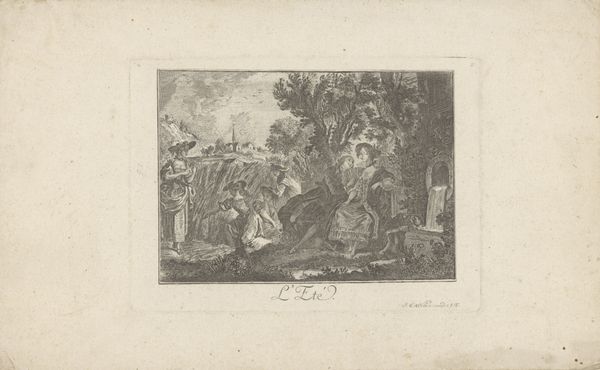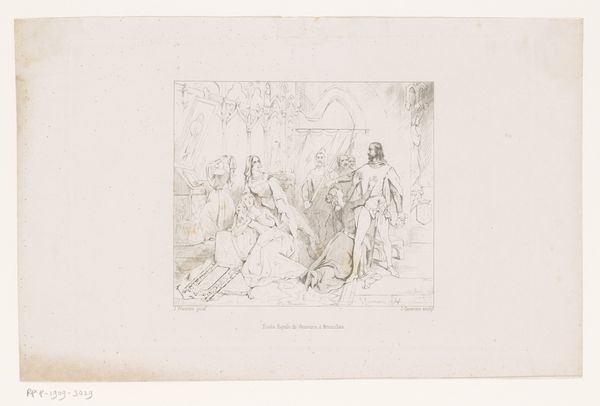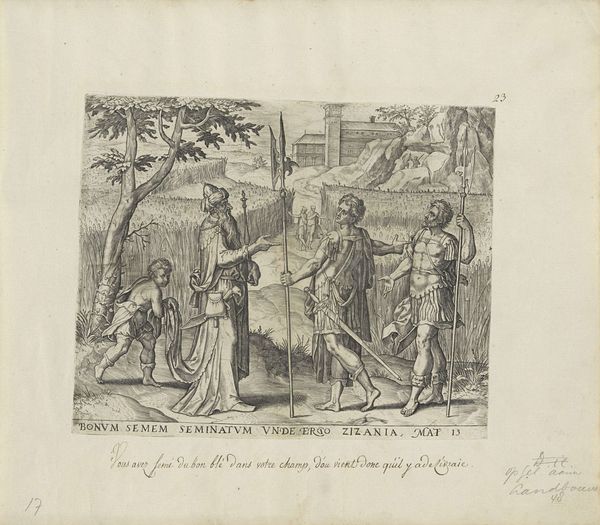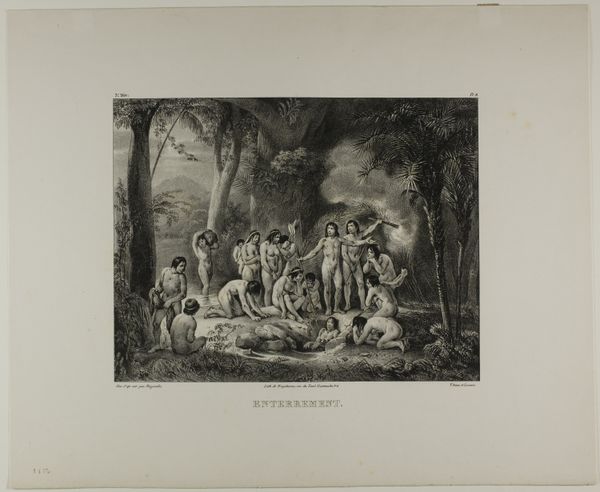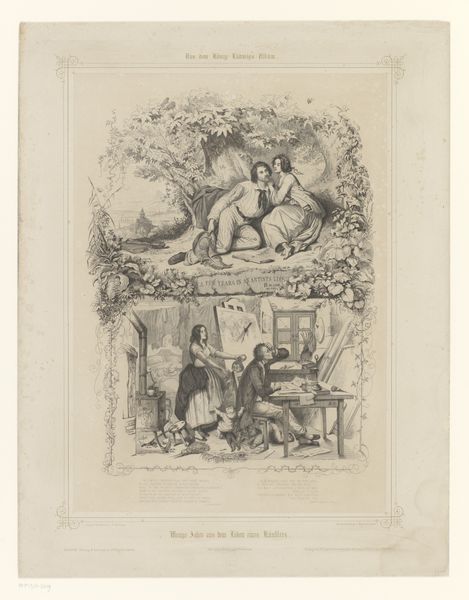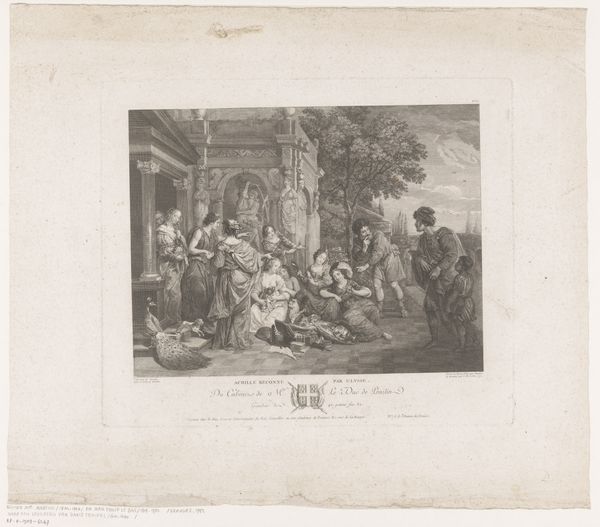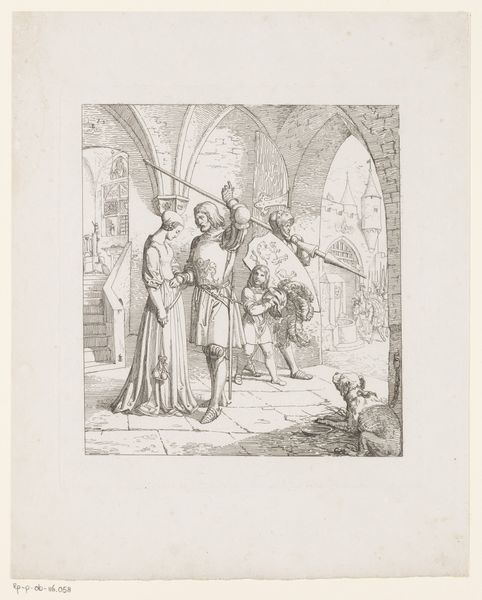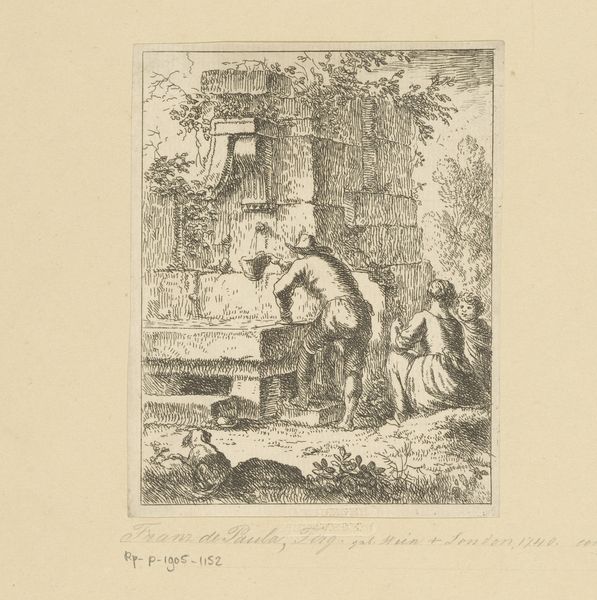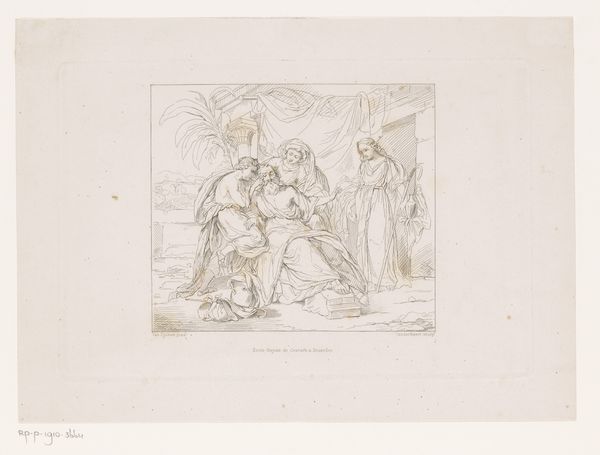
print, engraving
#
neoclacissism
# print
#
landscape
#
etching
#
history-painting
#
engraving
Dimensions: 315 mm (height) x 418 mm (width) (plademaal)
Curator: Here we have Erasmus Cristoffer Karlebye's "Minos og Voltaire" from 1793, currently housed at the SMK. It’s a fascinating piece, engraved and etched. What are your initial thoughts? Editor: The etching, at first glance, seems chaotic. But then, a very calculated arrangement of stark lines and contrasting light unfolds, lending it a surprisingly monumental aura. It’s busy but precise. Curator: Absolutely, the historical context here is key. Karlebye uses this visual juxtaposition to explore Enlightenment ideals versus traditional power structures. Voltaire, the champion of reason, stands before Minos, the mythological judge of the underworld. Think about the French Revolution that’s brewing at this time. Editor: The composition leads the eye. The dark foreground pulls you into the archway, which acts like a proscenium framing this theatrical judgment scene. Notice how Karlebye uses light and shadow within that arch. Curator: And observe what’s going on in the implied spaces. Beyond the arch are hints of different orders. On one side, we see classic architecture and a large gathering; on the other side a long procession towards a body of water. The piece suggests both classical learning and something else, maybe something spiritual, which are both being scrutinized by the figures in the center of the artwork. Editor: Yes, there’s an interplay between order and something approaching disorder, the solid architectural elements offset by swirling crowds and celestial figures. The formal rigor versus freedom of expression. Curator: Karlebye really sets up an ideological battle, the judgment of Voltaire taking place against the backdrop of revolution and societal change. This artwork encapsulates the tension of the era as it considers whether enlightenment ideas will prevail. Editor: Agreed. The use of linear precision, actually lends a dreamlike quality to it all, almost a lucid nightmare where philosophical ideas become living figures. Curator: It really invites us to consider how Enlightenment ideals might find judgement and impact within existing structures of power and how those traditional powers have to evolve. Editor: It’s interesting how formal analysis reveals the conceptual layering that lies underneath. The visual choices all contribute to the social and intellectual narrative. Curator: It’s an invitation to see the period's intellectual clashes through a visual lens. Editor: Indeed. A battle of aesthetics mirroring the battles of ideas.
Comments
No comments
Be the first to comment and join the conversation on the ultimate creative platform.

